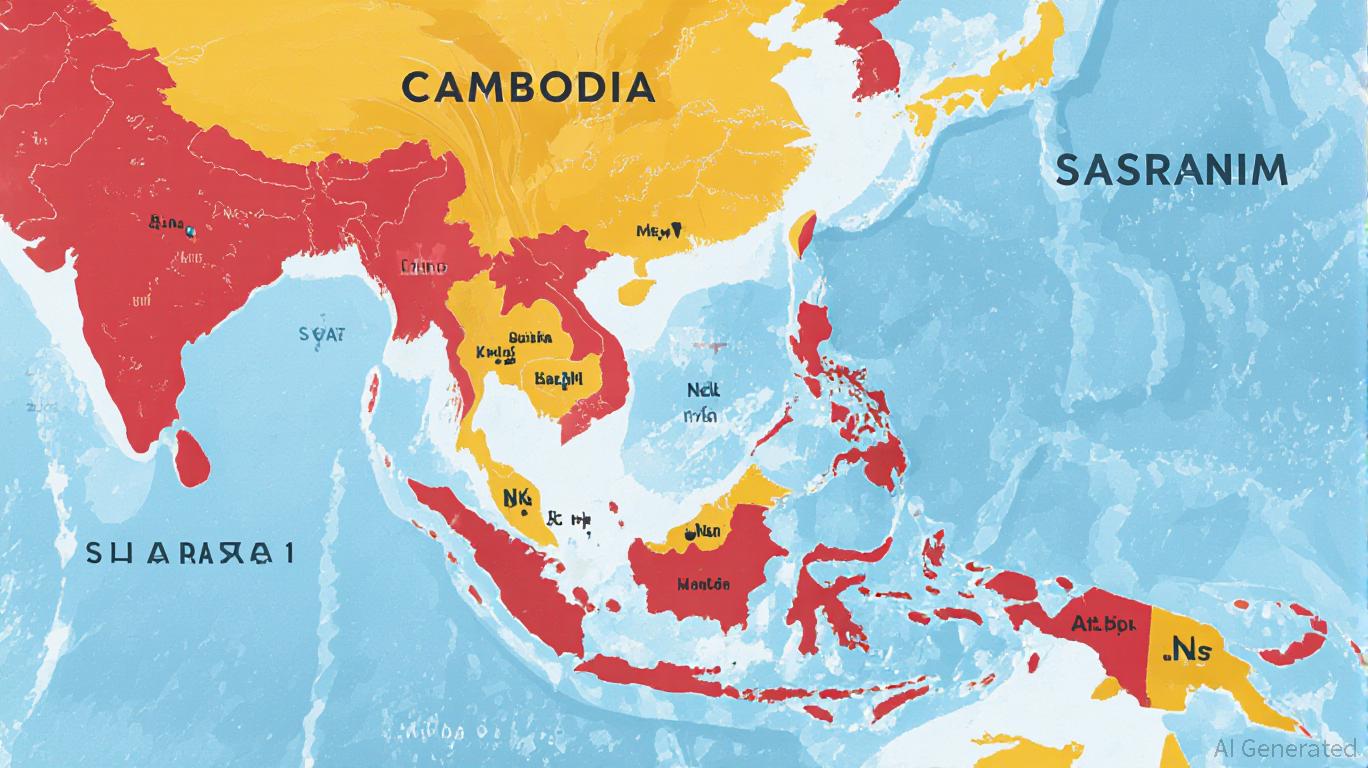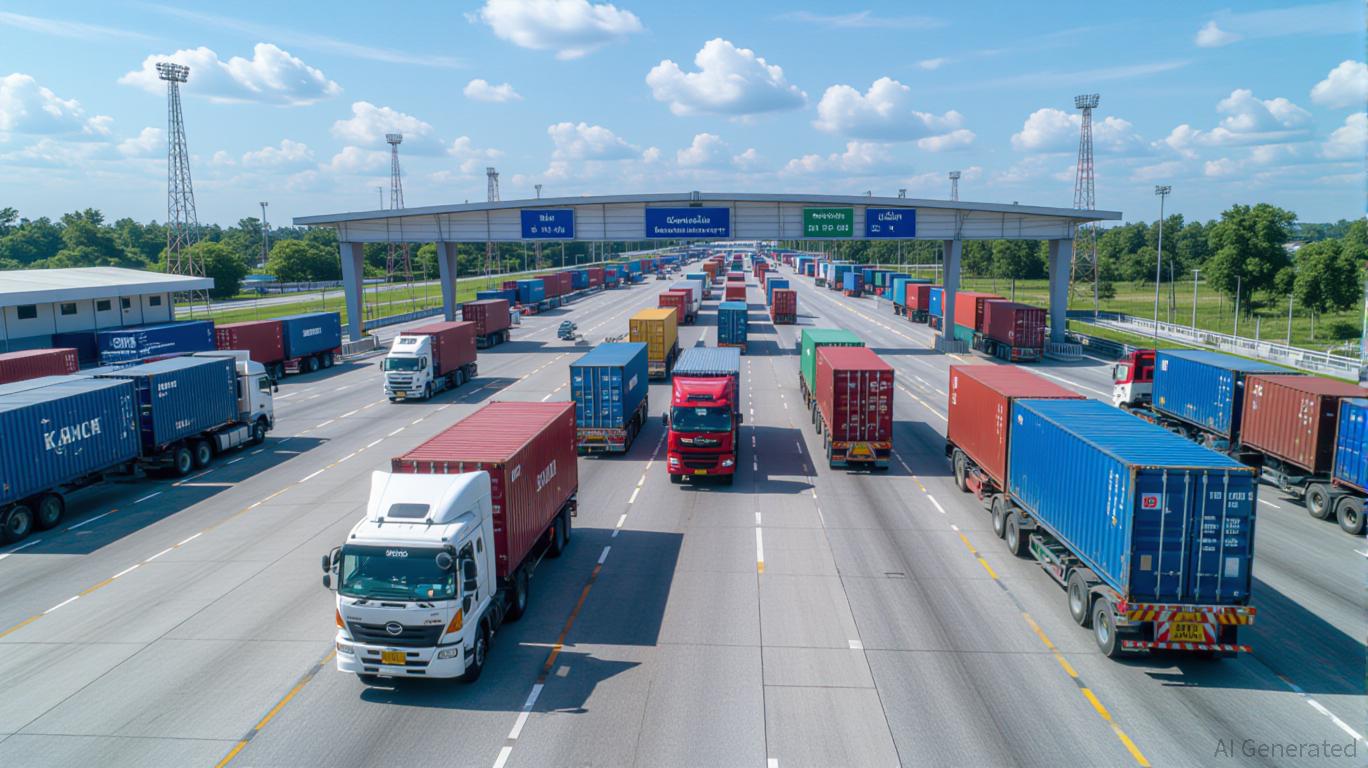
The recent Thailand-Cambodia border conflict, which escalated dramatically in 2025, underscores the delicate balance between geopolitical tensions and trade stability in Southeast Asia. President Donald Trump’s conditional trade stance—threatening steep tariffs on Thai and Cambodian exports—emerged as a pivotal factor in brokering a ceasefire. This approach, blending economic pressure with diplomatic engagement, highlights the evolving role of U.S. trade policy as a tool for conflict resolution. For investors, the episode offers a masterclass in how geopolitical leverage can reshape regional markets, while also exposing the vulnerabilities of economies reliant on cross-border cooperation.
The Mechanics of U.S. Trade Diplomacy
Trump’s strategy centered on the leverage of trade access. By threatening a 36% tariff on Cambodian and Thai exports to the U.S.—a critical market for both nations—he created a stark choice: prioritize hostilities or pursue peace. This approach mirrored his earlier interventions in South Asia, where trade incentives were used to de-escalate India-Pakistan tensions. The conditional nature of U.S. trade agreements—offering economic benefits contingent on diplomatic progress—forced both countries to recalibrate their priorities. Cambodia’s Prime Minister Hun Manet and Thailand’s acting Prime Minister Phumtham Wechayachai ultimately agreed to ceasefire talks, recognizing that economic survival depended on de-escalation.
The success of this strategy, however, was not without caveats. Thailand’s insistence on bilateral negotiations and Cambodia’s demand for “sincere intention” from the other side revealed the limits of top-down mediation. The U.S. role, while catalytic, could not fully resolve deep-seated territorial disputes rooted in colonial-era treaties and cultural sensitivities. For investors, this duality—economic leverage as a bridge and a barrier—signals the need to assess both the immediate and long-term implications of geopolitical interventions.
Investment Risks in a Fractured Region
The conflict disrupted $4 billion in annual bilateral trade between Thailand and Cambodia, with energy, agriculture, and tourism sectors bearing the brunt. Thailand’s state-owned PTT Group faced operational halts in fuel and electricity exports, while Cambodia’s tourism industry lost 70% of visitors to key sites like Preah Vihear Temple. The closure of seven border crossings also spiked transportation costs by 30%, rerouting goods through Laos and Vietnam. For markets, this created a bifurcation: defensive sectors like defense and logistics thrived, while tourism and retail faltered.
The conflict also accelerated regional realignments. Vietnam and Indonesia, leveraging ASEAN’s diplomatic inertia, secured favorable U.S. trade deals. Vietnam’s 0% tariff agreement on U.S. exports, for instance, widened its trade surplus to three times Thailand’s, signaling a shift in economic hierarchy. Investors must now weigh the risks of overexposure to Thailand’s trade-dependent sectors against the potential gains in Vietnam’s manufacturing and energy exports.
Opportunities in Post-Conflict Reconstruction
The ceasefire, brokered in part by U.S. pressure, has opened avenues for cross-border cooperation. The resumption of trade routes could revive energy and agricultural sectors, with Thailand’s PTT Group and Cambodia’s state-owned energy firms poised to benefit. Long-term, the conflict has highlighted the value of infrastructure resilience. Logistics companies like Pan-Asia Freight (SG:PAP) and Maylong Logistics (KL:MAYL) have already capitalized on rerouted shipments, charging a 30% premium.

Renewable energy is another growth area. The conflict exposed vulnerabilities in fossil fuel supply chains, prompting both countries to pivot toward solar and wind projects. Thai Aerospace Industries (THAILAND:TAA) and Siam Defense Systems (THAILAND:SDS), which saw stock gains of 15% during the crisis, are now diversifying into cybersecurity and hybrid energy systems. Investors with a long-term horizon should prioritize firms with cross-border partnerships and ESG-aligned projects.
Navigating the New Normal
For foreign investors, the Thailand-Cambodia conflict is a case study in the interplay between geopolitics and markets. Key lessons include:
1. Diversify Exposure: Avoid overreliance on single markets. The U.S. trade leverage model may not work uniformly; regional dynamics vary.
2. Monitor Diplomatic Signals: The September 2025 Joint Boundary Commission (JBC) meeting could be a litmus test for sustained peace.
3. Prioritize Resilience: Defensive sectors like utilities and healthcare (e.g., Thai government bonds yielding 3.2%) offer safer havens in volatile environments.
4. Leverage ASEAN’s Role: While ASEAN’s consensus-driven model is slow, its proposed digital infrastructure and conflict resolution funds could stabilize regional trade in the long run.
The U.S. has demonstrated that economic leverage can act as a catalyst for peace, but it is no panacea. For Southeast Asia, the path to stability requires not just external pressure but internal compromise. Investors who recognize this nuance—and position their portfolios accordingly—will be best placed to capitalize on the region’s post-conflict rebirth. The challenge lies in balancing caution with optimism, ensuring that geopolitical risks are managed while opportunities in energy, logistics, and infrastructure are seized.
In a world where trade and diplomacy are increasingly intertwined, the Thailand-Cambodia case serves as a reminder: markets thrive not in isolation, but in the spaces where peace and prosperity converge.
